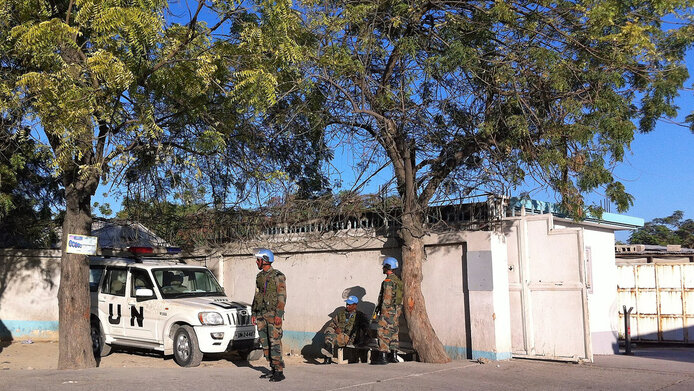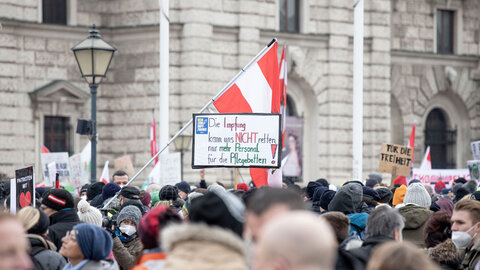How UN peacekeeping forces settle compensation claims

It was in 1956 that the first modern United Nations peacekeeping mission was launched. Under the name of UNEF (United Nations Emergency Force), troops neutral to the conflict were stationed on the Sinai Peninsula to secure peace in the face of the then Suez crisis between Egypt and Israel. The early 1960s saw a particularly tragic incident that was not connected at all with the actual conflict: UN soldiers fired into the air to disperse children playing outside the gates of a camp. One of the bullets ricocheted and wounded a child fatally.
This incident clearly demonstrated that it is not only the peacekeepers themselves who are at high risk when deployed in a conflict zone. The local civilian population can also be negatively affected – in a particularly tragic way, at that, as the UNEF incident shows. A wide range of damage cases, from destroyed fields to people injured in a traffic accident, have accompanied each of the approximately 60 missions to date, whether in Africa, the Middle East or Europe.
In her FWF-funded project, Kirsten Schmalenbach, a law professor from the University of Salzburg, is investigating the tort law that governs such cases. “I am working on identifying and making transparent the legal norms that the UN has applied to date in compensation cases. But I am also developing the foundations for new and more suitable legal norms derived from international law,” explains Schmalenbach, whose forthcoming publication is intended to pave the ground for the evolution of legal practice in this area.
The project
The United Nations currently has 13 peacekeeping missions. This results in damage to local structures and the population. The resulting claims for compensation are shielded from the public eye. The aim of the research project is to bring transparency to these procedures and thus contribute to improving the legal norms and practice of claims settlement by international organizations.
More information
Non-transparent damage amounts
When a case of damage is registered, for instance by an injured party who reports it to the troop command, an investigation ensues. “This fact-finding is at the heart of the process. It is taken very seriously and can be easily comprehended on the basis of the relevant files,” says Schmalenbach. “But when it comes to determining the amount of damages, things become a lot less transparent. The legal considerations behind the question of whether someone receives EUR 50 euros or EUR 10,000 are difficult to fathom.”
The military contingents come from a wide variety of countries and are often very keen to resolve cases very pragmatically and without involving other institutions or groups of people. Claims are often dealt with quickly and unbureaucratically. At the same time, efforts are made to protect the UN soldiers in the best possible way and to shield them from consequences – even in more serious cases. “In the past, cases of sexual abuse in particular received a lot of media attention because those who were supposed to help became criminals. The majority of cases, however, do not belong to this category. They do not involve any intent to cause damage to property or life and limb,” notes Schmalenbach.
Non-transparent legal practice of the UN
Schmalenbach has many years of experience in the investigation of legal practice in peacekeeping missions. Even 20 years ago, she explored this field in the context of her research. “At that time, the UN files on internal decision-making processes that were more than 20 years old were still very accessible. But that changed after a very problematic case in 2010,” she recalls. “Back then, a UN soldier from Nepal brought cholera to Haiti. Ever since this scandal, hardly any information has been released.” For this reason, Schmalenbach mainly has access to data that she collected before 2002. More recent information is very hard to come by.
One thing that has become clear is the fact that the UN handles claims for compensation differently to NATO peacekeepers in their missions. “NATO missions are structured similarly to those of the UN peacekeepers. However, liability is assumed by the states that contribute troops, and they decide independently whether to apply the local law on damages or their own”, explains Schmalenbach. “The UN, on the other hand, assumes liability itself. While they also have the option of using local national law, this can be difficult for the UN given the different legal cultures with which one is confronted. Just think of countries like Somalia, where customary law in some regions requires payments to be made in kind – in goats or camels, for example.”
Hence the UN mostly applies its own rules in the area of damages law, which are extremely patchy. “There is a limitation of liability in terms of amount. The deadline for claiming damages is also limited. But not even this limit is specified. Most of the cases are dealt with by common practice,” summarizes Schmalenbach. In other words, people act largely out of habit and informally established routines.
Harmonizing different legal cultures
Schmalenbach would now like to see this lack of transparency replaced by clearly comprehensible legal norms derived from international law. “The aim is to identify general legal principles of liability law that build a bridge between the different legal cultures. They must be aligned with both human rights considerations and practical requirements,” she underlines.
On the one hand, this is basic legal research. On the other hand, there is also a good chance that aspects of her work will be taken up for future practice. Schmalenbach: “The publication I am working on could provide NGOs that help victims with powerful arguments. Even if the UN does not support my research, they could take up aspects of my work in future reforms. And, ultimately, my considerations could also be relevant for possible future EU peacekeeping forces – Ukraine comes to mind.”
The researcher
Kirsten Schmalenbach is Professor of International and European Law at the Paris Lodron University of Salzburg. Her previous career stations include the University of Cologne, the University of Bayreuth and the University of Graz. As a recognized expert in international law, as well as the legal foundations of international organizations and international environmental law, she also acted as advisor to the foreign ministries in Germany and Austria.
Schmalenbach is a Senior Fellow at the Hamburg Institute of Advanced Study (HIAS) until fall 2025, where she is conducting research on environmental law under the topic of “The Legal Personality of Natural Entities”. The project “UN Tort Law for Peacekeeping Missions“, which runs from 2021 to 2025, is funded by the Austrian Science Fund FWF with 370,000 euros.
Publications
United Nations’ Tortious Liability. Third-Party Claims Arising from Peacekeeping Missions, Edward Elgar Publishing 2026 (forthcoming)
The Great Unknown, General Principles Governing the Law of International Organizations, in: Liber Amicorum for Niels M. Blokker, Brill 2025
Judge and Jury: The UN and the Haiti Cholera Claims, in: International Organization Law Review 2015
Preserving the Gordian Knot: UN Legal Accountability in the Aftermath of Srebrenica, in: Netherlands International Law Review, Vol. 62, 2015





